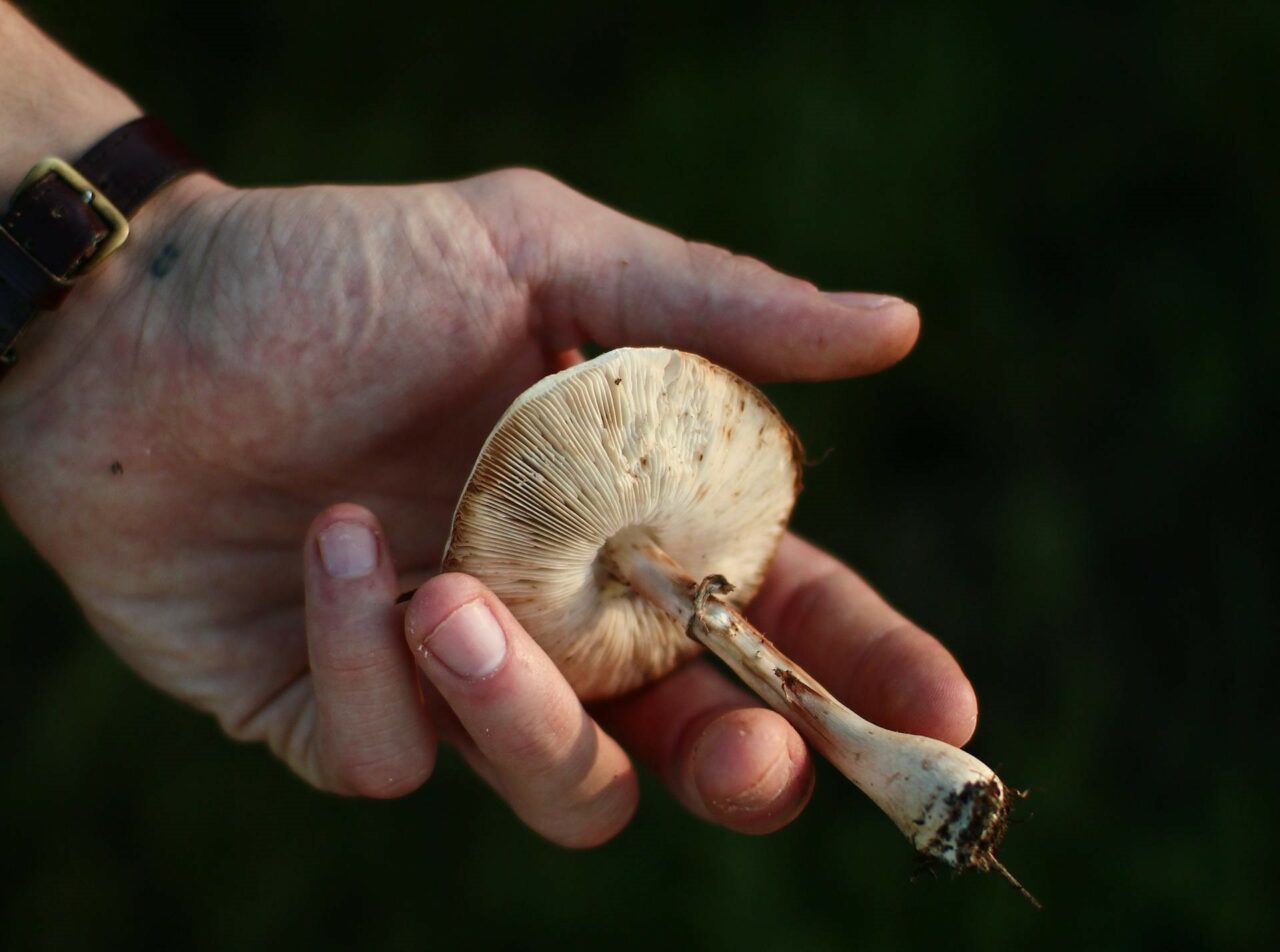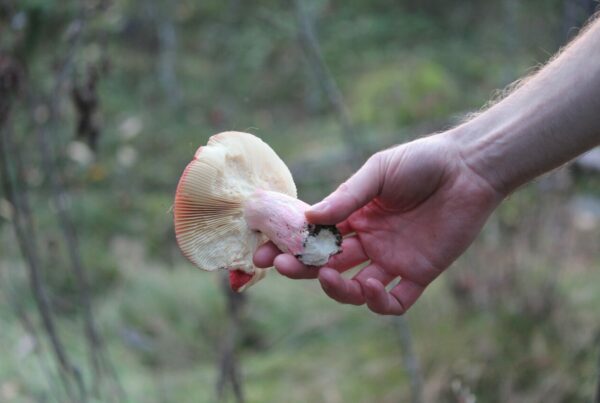Psilocybin mushrooms, similar to LSD as they act as a serotonin 5-HT2A receptor agonist, have a long history of use as psychedelics. Current investigations are analysing their potential in psilocybin-assisted therapy to treat mental health issues. This includes emotional distress tied to major depression, anxiety, cluster headaches, and migraines.
Understanding how shrooms can help with these conditions involves investigating their metabolic process within the body. This knowledge helps researchers and users ascertain how the active compound triggers psychological and therapeutic effects. This article offers a basic overview of psilocybin’s pharmacology and pharmacokinetics.
[toc]
Key Takeaways:
- Approximately half of the psychedelic fungi ingested orally is absorbed and disseminated throughout the body.
- The fungi’s compound is dephosphorylated primarily in the liver by the enzyme alkaline phosphatase.
- About 3.4% of the compound is expelled in its unchanged form within 24 hours, while the majority is excreted as a stable metabolite.
What is Pharmacokinetics?
Pharmacokinetics (PK) is an area of study that explores how the body handles substances, such as drugs, once they’re ingested. It is distinct yet related to pharmacodynamics, which looks at how a compound interacts with the body. PK focuses on four main aspects: absorption, distribution, metabolism, and excretion (ADME).
Grasping these processes enables medical professionals to prescribe the most appropriate and safest medications. It also allows them to customize treatments to suit the specific physiology and lifestyle of each patient.
How Does Pharmacokinetics Relate to Psilocybin?
The primary active compounds in certain magic mushroom species, psilocybin and psilocin, have generated substantial interest among researchers and users. Pharmacokinetics looks at how the body processes mushrooms containing psilocybin, helping to comprehend their potential effects, whether therapeutic or recreational.
These compounds go by several names, including “magic,” “psychedelic,” “medicinal,” or “sacred.” The fungi that contain these compounds are ingested, with the varieties of these mushrooms, their origins, sizes, growth and drying conditions, and their age can significantly influence their concentration levels.
Although these mushrooms naturally grow in the wild, scientists have devised ways to manufacture them in labs. Both the naturally occurring and lab-made versions exhibit low toxicity, although some minor side effects like nausea or vomiting may occur.
Notwithstanding these physical effects, the compounds in these mushrooms have demonstrated potential therapeutic benefits due to their safe profile and non-addictive properties. These benefits have prompted researchers to investigate their use in psychotherapy, particularly for treating anxiety and depression.
The 4 Stages of Pharmacokinetics
Psilocybin, the compound present in these mushrooms, is inactive in its raw form and acts as a prodrug, converting into its active form, psilocin. Enzymes such as alkaline phosphatase facilitate this transformation, enabling psilocin to be absorbed and circulated throughout the body, reaching various tissues. However, after oral administration, psilocybin cannot be found in the circulatory system, feces, or urine.
Absorption
Absorption refers to the process through which the compound enters the bloodstream from the site of administration. It determines the speed and effectiveness with which the compound reaches its target, such as the plasma. The most common method of administration is oral intake. Inhalation has been tried but is not as successful as oral ingestion.
Additionally, the absorption process includes the release of the compound from the dosage form during oral intake. Factors such as a delay in the throat or esophagus can affect this, potentially slowing down the effects or causing discomfort. Once the compound arrives in the stomach, the acidic environment may start to degrade it before it enters the bloodstream.
Studies on animals have shown that only about 50% of orally administered psychedelics are absorbed and distributed throughout the body.
Factors Influencing the Absorption Process
Several factors can influence the absorption process, leading to variations in the onset, intensity, and duration:
- Stomach Contents: Consumption on a full stomach can stall the process as it slows down the onset of effects. In contrast, an empty stomach allows for quicker absorption.
- Body Fat: Compounds can accumulate in fat tissues, which may prolong their effects.
- Age: Metabolic rates and body composition often vary with age.
- Zero-Order Kinetics: The substance is eliminated at a steady rate, regardless of its concentration.
- First-Order Kinetics: The elimination rate is proportionate to the concentration of the drug.
Dispersion implies the spread of psilocin within the body after it has been absorbed into the bloodstream. Due to its lipophilic nature, psilocin can traverse the blood-brain barrier and gain access to the central nervous system.
system.The product’s size, polarity, and protein-binding capacity, in combination with an individual’s physical constitution—including hydration status and body composition—have a substantial impact on this process.
The goal is to achieve a potent concentration at the target location. To be effective, the product must reach the intended area, as dictated by the volume of dispersion, and remain unattached to proteins, allowing it to actively interact with its receptor.
What Factors Affect Dispersion Processes?
Several factors can impact the dispersion process:
Typically, the effects start to manifest within 20-40 minutes following intake, reaching their peak around 80-100 minutes. The effects of magic mushrooms generally last between 4-6 hours.
How is Dispersion to the Brain Accomplished?
An initial experimental research on two species divulged that its binding affinity order is 5HT2A > 5HT1A > 5HT2B [23]. It also interacts with dopamine D1, 5HT1E, 5HT5A, 5HT7, 5HT6, D3, 5HT2C, and 5HT1B receptors.
It acts as a partial agonist at the 5HT2A receptor, having an efficacy of roughly 40%. The psychedelic effects can be traced back to its partial agonist activity at 5HT1A autoreceptors.
The enhancement of mood and psychotomimetic experiences might be due to the observed connection between increased dopamine levels and sensations of depersonalization and euphoria. Hallucinogens work by modifying neurochemistry and receptor activity. It enhances 5HT2A agonist activity by elevating BDNF production in the hippocampus, which promotes neurogenesis and reduces conditioned fear-related behaviours.
Elimination
Elimination refers to the process by which the The body expels substances mainly through the kidneys, but also the lungs, skin, or gastrointestinal tract. In relation to the kidneys, they filter or secrete a naturally occurring psychedelic drug in the glomerulus or tubules, while some reabsorption adds intricacy to the process.
The primary compound has an estimated half-life of 160 minutes, compared to psilocin, which has a half-life of about 50 minutes. From animal studies, it has been revealed that the majority of the substance is primarily excreted in the urine, making up around 65% within 8 hours. Post-consumption, residual traces of the substance can be detected in smaller amounts in bile and feces.
In human bodies, roughly 3.4% of the substance is expelled in its original form within a day, whereas the bulk is removed as psilocin-O-glucuronide, a more stable metabolite. This stability allows the compound to be identified in urine samples for a prolonged duration.
Substance excretion primarily occurs in two ways:
Most psychedelic drugs follow the first-order kinetics method, reaching stable concentrations after four to five half-lives. Total elimination also occurs after four to five half-lives.
Discover Our Range of Hallucinogenic Mushrooms
The metabolic process differs amongst various types of fungi. By opting for reliable online suppliers like Shroom Delivery Canada, you can steer clear of inadvertently consuming poisonous mushrooms. Certain varieties, such as Agaric mushrooms, can lead to strong and undesirable effects. Hence, it’s essential to procure magic mushrooms from trusted dispensaries, avoiding risky street vendors or wild foraging.
| Feature | Enigma | Full Moon Party | Gold Member | |
| Strain Type | Psilocybe Cubensis OMNI | Psilocybe cubensis (Thai Koh Samui) | Psilocybe cubensis | |
| Potency | Exceptionally high; 3.8% tryptamine content | Moderate to high potency | High potency | |
| Visual Characteristics | Resembles a blob or | Resembles the structure of a cauliflower or brain | Has traditional cubensis characteristics; moderately sized | Features thick white stems; golden caramel caps; and noticeable blue bruising |
| Effects | Known as the strongest; delivers intense results | Offers a powerful mental high; onset is delayed but visuals are pronounced | Brings about potent visuals and euphoria |
Online Learning on Psilocybin Mushroom Usage
For medical professionals, researchers, and users, comprehending the pharmacokinetics of shrooms is crucial. Such knowledge allows for informed decision-making regarding dosage and timing, reducing potential risks.
Discover your perfect psychedelic experience at Shroom Delivery Canada. Whether you desire a soothing journey or a deeper exploration, our extensive product range is tailored to your unique needs. Enjoy premium, safe, and quality-controlled shrooms, eliminating worries about questionable sources or poisonous mushrooms.
Engage with the best magic mushrooms Canada has to offer, and take your psychedelic journey to new heights.
Frequently Asked Questions
Are there any documented interactions between shrooms and other drugs?
Our products may interact with certain medications, particularly those affecting serotonin levels, such as SSRIs (Selective Serotonin Reuptake Inhibitors). SSRIs and SNRIs (Serotonin and Norepinephrine Reuptake Inhibitors) may lessen the effects, unlike non-serotonergic antidepressants. This reduced effect can last up to three months after stopping the antidepressant.
Do all psychedelics have the same metabolic path as psilocybin?
No, each psychedelic drug has a unique structure that requires different metabolic processes to activate, and they bind to different receptors in the body. The route of administration also affects how each psychedelic is absorbed. While the basic principles of absorption, metabolism, and distribution are consistent, the specific pathways and effects vary for each substance.
Does the form of the shroom affect its pharmacokinetics?
Yes, the form (whether it’s fresh, powdered, or dried mushrooms) can affect the absorption rate. For example, powdered forms could be absorbed faster than whole dried ones due to quicker dissolution.
Suggested Reads:





